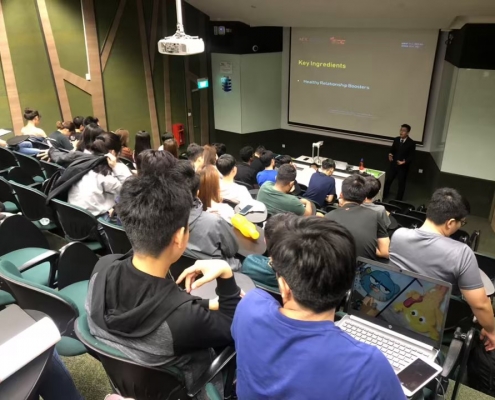Cyberbullying

Photo by Muhammad Raufan Yusup on Unsplash
The silence around cyberbullying can mean many things. For the victims, they may find themselves unable to step forward to seek help due to fears of being dismissed for complaining about seemingly trivial banter, or they are fearful of exacerbating the bullying. For some, they could be witnesses to cyberbullying but choose to stay in their lane out of fear of becoming the new target for these cyber bullies. For some, they may be the culprits who post derogatory remarks about others online.
The culture of silence may lead to an adverse effect on the self-esteem of victims and can lead to many issues, such as but not limited to worsening social anxiety, withdrawal from others, depression and even suicidal ideation.
Ultimately, the silence leaves us guessing and wondering as to what the magnitude of cyberbullying really is. With the limited information that we have about the pervasiveness and responses to cyberbullying, it stifles the extent of which effective intervention can be done to curb cyberbullying.
Parents also play an important role in teaching their children about cyber safety and security. As parents are likely to be the ones giving children their first mobile device, it is important for parents to educate the child accordingly.
Cyberbullying in Singapore
We believe that cyberbullying and the impact that it has on victims is gaining more awareness. With that, more individuals (such as the authorities, teachers, schools and parents) are treating cyberbullying more seriously.
Victims of cyberbullying may find themselves thinking, “Is this considered bullying or am I just being sensitive?” It can be tricky to define exactly what is cyberbullying, as the threshold of what actions online qualifies as cyberbullying varies from individual to individual. Some victims may choose not to talk about their experiences with cyberbullies out of fear of being made fun of being overly sensitive towards seemingly harmless posts and comments made by strangers online. Even though victims may be troubled by the posts, rumours or even photos of themselves that are made and circulated by others online, they may choose to keep silent if they do not have a tangible proof for others to concur that they are indeed victims.
Additionally, as flagging out these incidences would also shed light on their own online activities, victims may choose to remain silent. For example, they may end up being questioned as to what they were doing on that particular platform or website where the incident occurred, or they fear that they would get into trouble with their parents and have their devices confiscated.
While this may still be prevalent, it is also encouraging to note that platforms such as Instagram and Facebook have made it easier for individuals to report inappropriate behaviour of others anonymously. By empowering bystanders to take action, this has lowered barriers for others to step forward to collectively report inappropriate behaviours and take down accounts of cyberbullies.
On the other hand, some cyberbullies may feel that there is a veil of anonymity that they can hide behind and mistakenly think that they do not need to take responsibility for the way they conduct themselves online. This creates a sense of disinhibition that can make the attack even more vicious or hurtful than one may expect if it were a face-to-face confrontation.
It is crucial to note that unlike physical bullying which stops when the bully and victim are apart, cyberbullying transcends physical boundaries – it goes beyond the classroom, workplace and impacts the victim’s personal life. Additionally, content posted online can spread like wildfire and it may be nearly impossible to scrub content off the Internet as others can repost the content on other platforms or circulate it amongst their friend groups.

Photo by bruce mars on Unsplash
What can parents and peers do to help tackle cyberbullying in a constructive and empathetic way?
Everyone plays an important role in looking out for signs that someone is being cyberbullied. These can include sudden withdrawal from social activities, reluctance to go to school, or sudden loss of interest in hobbies or activities that they were usually interested in. In some cases, victims of cyberbullying, particularly if the incident involves body-shaming, may develop eating disorders.
Parents: The fast-paced evolution of the internet may be foreign to older parents and the idea of cyberbullying may not be something that they can easily understand. As a parent, it would require some effort to step into your child’s shoes to understand the impact of social media on their lives and how it shapes their expectations towards life. It is important to note that being a victim of cyberbullying can be as emotionally detrimental, if not more so, than physical bullying.
Parents also play an important role in teaching their children about cyber safety and security. As parents are likely to be the ones giving children their first mobile device, it is important for parents to educate the child accordingly.
It is important to create open and non-judgmental conversations with their child where the child would feel safe to confide in them about what they may have experienced online. Parents should also be careful not to dismiss what their child is experiencing and instead, support the child through the difficulties and seek professional help from the authorities or professional counsellors if needed.
Peers: Standing up for what is right is important and it is easy to just be a silent bystander when cyberbullying occurs right in front of you. Take the initiative to block and report such accounts that use crude degrading words to others.
Written by:
Angelina Lim, Deputy General Manager
Joseph Quek, Professional Counsellor











